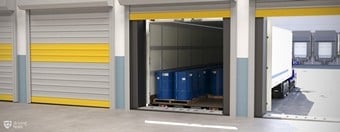

All your missed questions are saved
automatically for extra practice.




It's a practice test that's automatically made up of all your missed questions. Once you finish this test, you’ll be able to revisit your Challenge Bank™ to practice and sharpen your skills.
View All PlansAdding difficult questions to Challenge Bank™ is an exclusive Premium feature. Unlock access to 650+ exam-like questions, a Pass Guarantee, personalized study plans, and more.
View All PlansFree California HazMat (H) Endorsement Practice Test 2025
| 90-100 | => | 13% |
| 80-89 | => | 20% |
| 70-79 | => | 26% |
| 60-69 | => | 22% |
| <60% | => | 19% |
California is a HazMat powerhouse. With major corridors like I-5, I-10, I-15, and US-101 connecting ports, refineries, and distribution centers, HazMat-certified drivers are in constant demand. Without this endorsement, you cannot legally transport explosives, fuels, industrial chemicals, radioactive materials, or infectious substances—locking yourself out of thousands of specialized, higher-paying jobs.
Age exception for California: Drivers 18-20 years old can obtain the HazMat endorsement, but federal law restricts them to intrastate (within California) transport only. Interstate HazMat transport requires age 21+.
Top California employers requiring HazMat drivers:
- Petroleum & Energy: Chevron (headquartered in San Ramon), Valero, Phillips 66
- Pharmaceuticals: Amgen Inc. (Thousand Oaks), Gilead Sciences (Foster City)
- Chemical manufacturing: Air Products, Linde, numerous ag-chem distributors
- Ports & logistics: LA/Long Beach port carriers, Central Valley ag transport
What to expect on the official California HazMat test:
- Questions: 30 multiple-choice
- Passing score: 80% (24 correct answers required)
- TSA background check: Mandatory—apply immediately (takes 2-4 weeks)
- Topics covered: Federal regulations, substance handling, packaging, quantity limits, transport configurations
How to get your HazMat endorsement:


Reviewed for legal and handbook accuracy
M.S., Chief Educational Researcher (ACES member)
Last verified for accuracy on
Real California drivers who passed first try
Verified student reviews • Shared with permission
About the California CDL
- Apply for TSA fingerprinting now — results take weeks, so don’t wait
- Study while you wait using our practice tests and the official CDL manual (California CDL Handbook 2025)
- Pass the DMV knowledge test (80% required)
- Visit DMV with documents and fees to receive your endorsement
Our California HazMat practice tests mirror the official DMV exam format. 30 questions with instant feedback — no fluff, just what you need to pass on your first attempt.
More CA CDL test resources
Are you in another state?
- Alabama
- Alaska
- Arizona
- Arkansas
- California
- Colorado
- Connecticut
- Delaware
- District of Columbia
- Florida
- Georgia
- Hawaii
- Idaho
- Illinois
- Indiana
- Iowa
- Kansas
- Kentucky
- Louisiana
- Maine
- Maryland
- Massachusetts
- Michigan
- Minnesota
- Mississippi
- Missouri
- Montana
- Nebraska
- Nevada
- New Hampshire
- New Jersey
- New Mexico
- New York
- North Carolina
- North Dakota
- Ohio
- Oklahoma
- Oregon
- Pennsylvania
- Rhode Island
- South Carolina
- South Dakota
- Tennessee
- Texas
- Utah
- Vermont
- Virginia
- Washington
- West Virginia
- Wisconsin
- Wyoming
We know what it takes to pass. And we’ve got the proof.
Driver’s Ed is - nobody wants to set foot inside the DMV. That’s why millions of learners trust us for simple, visual, effective prep.
An official & trusted partner in driver education
We are an officially recognized FMCSA Entry-Level Driver Training provider and a proud partner to over 2,500 libraries. We work with safety organizations like GHSA and the National Safety Council to help create safer roads for everyone.






A smarter way to study
Challenge Bank™
Our trademarked system automatically saves questions you miss, creating personalized tests that target your weak spots until you’ve mastered the material.
AI-powered feedback
Get smarter as you study. Our new AI-powered feedback provides detailed, question-level insights to help you understand the why behind each answer.
Interactive handbook
Go beyond the boring black-and-white manual. Our interactive handbook lets you read, listen with an MP3 audio version, or even chat with it to find the information you need, faster.
We build our practice questions from the current 2025 CA Driver Handbook and refine them using patterns recent test‑takers report.
Driver handbook • Knowledge‑test/permit overview • Fees & ID requirements • Office/appointment info
We mirror recurring themes (e.g., right‑of‑way traps, sign look‑alikes) and use similar distractors and wording styles.
We don’t collect or publish actual test items and we’re not affiliated with DMV.

